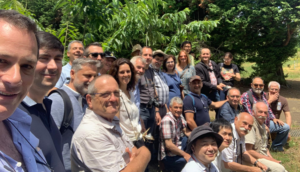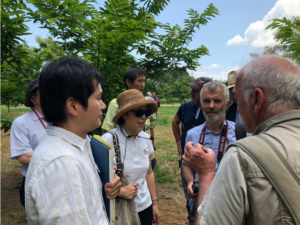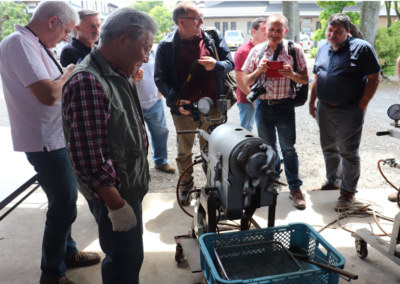Chestnuts are a central part of Japanese culture and gastronomy.
Chestnuts are a central part of Japanese culture and gastronomy. Castanea Crenata or Japanese chestnut is an indigenous tree whose fruit was already heavily harvested in the Jômon period (fourth century BC – Final Paleolithic).
In Japan, the chestnut fully plays its symbolic role as the last fruit of autumn, a crucial element in a country which, despite (or thanks to) its high rate of urbanisation, still places great importance on contact and communion with nature.
In autumn, you can find Lady Kuri (the little name of the chestnut in Japan) in the windows of the great pastry shops and on the menus of the great gourmet restaurants.
Valuation :
- Very wide range of chestnut-based products
- 70% of the volume used to make Mont Blanc and other desserts (Kuri….)
- All fruits are peeled with a knife
- Steam roasting equipment
- Lots of marketing
Lessons learned by Bertrand Guérin.
There are chestnut trees all over the country and with a production of 18,700t in 2017, production is declining but the country remains in the top 10 chestnut producing countries in 2017 according to the FAO. The country also imports a lot of chestnuts from China (leader of the world production in 2017 with 1,939,719t) since the beginning of the 2000s and is also fond of European chestnut confections.
This exploratory mission of the chestnut sector in Japan was organised by INTERCO Nouvelle-Aquitaine in collaboration with AREFLH. The goal was to understand the functioning of the sector concerning: research and innovation, production techniques, the processing industry, product innovations, commercialization, and Japanese consumption patterns.

In terms of participants, they were member companies of the Eurocastanea network in France, Spain and Portugal.
Visit of a producer/processor: Mr. Kurien KOZAWA.
This family business, father and son, specialises in roasted chestnuts. They have 15 hectares of chestnut trees made up of 6 varieties of Japanese chestnuts (Tskuba,…), they produce 30 tons of chestnuts.
The harvest goes from September to December. The chestnuts are kept in cold storage between 1°C and -1°C.
– 20 % are sold fresh at around 2,200 yen (18€/kg).
– 80% are roasted chestnuts at 4,000 yen (32€/kg), 20% of which are sold on the internet.
The chestnut trees are kept for 20 to 30 years before being replaced. During the visit, Mr. KIZAWA made us taste Japanese and hybrid (Japanese/Chinese) roasted chestnuts of the “Oshi” variety, which are steamed for ten to fifteen minutes.
The small model has a capacity of 5 kilos (cost: 500,000 Yen)
The large model has a capacity of 10 kilos (cost: 1,500,000 yen). The chestnuts are frozen at -34°C, before being roasted. The roasted chestnuts are packed in vacuum bags for commercialization. Chestnuts are eaten cold or reheated in the microwave.
The average wage is 1,000 Yen = 8.20 €/hour including all charges.
By Christophe Hemar (Manager Gaec de la Châtaigneraie) and Michel Grange (Manager La Ferme Du Châtaigne)















